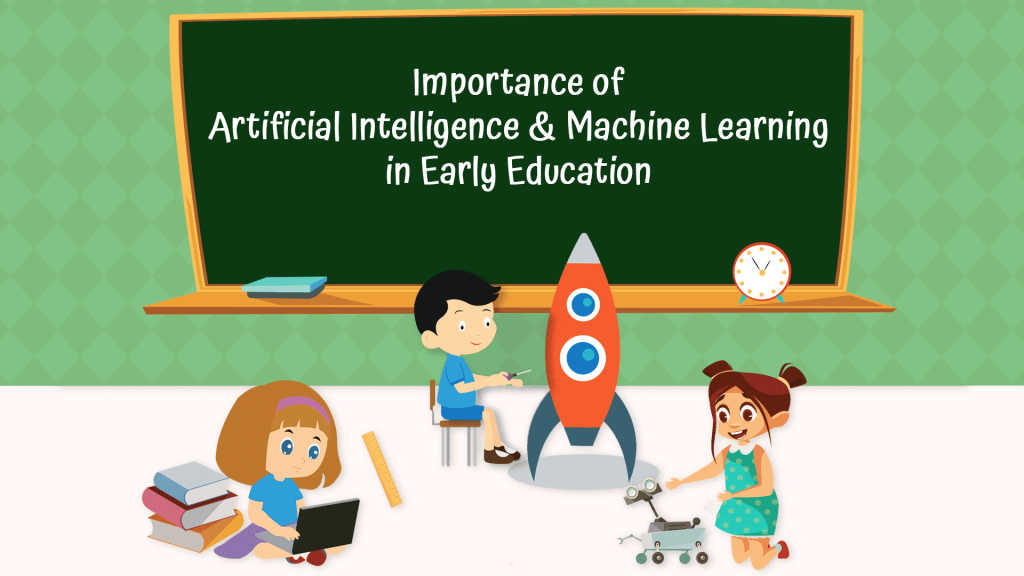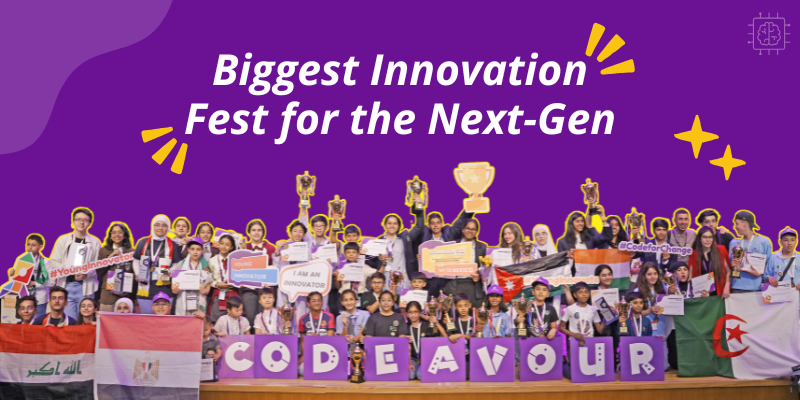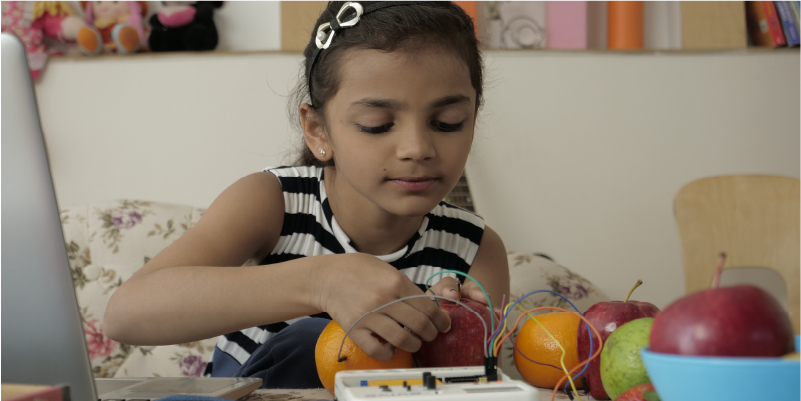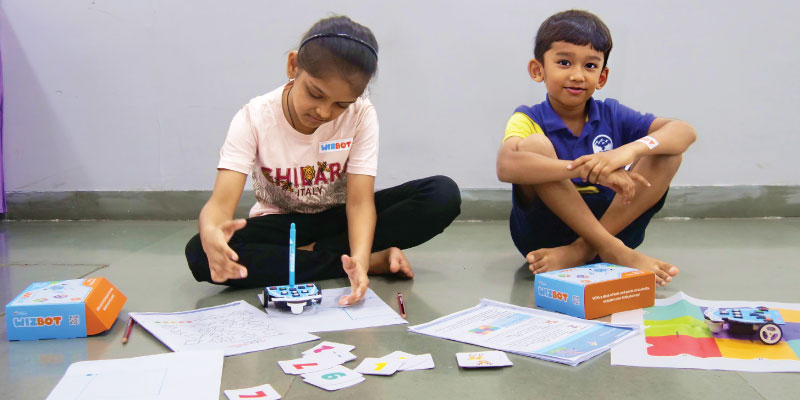The importance of Artificial Intelligence (AI) and Machine Learning (ML) can be seen through everyday examples – the text correction and prediction we use to type this article, anti-bot captcha systems, search engines, chatbots, personal assistants, product suggestions and personalised advertising are some of the common usages of AI and ML. Even self-driving cars and meteorological departments give huge importance to AI and ML to predict and prevent accidents and calamities.
AI-assisted education is also becoming more common today which helps teachers and educational institutions to assess children and personalise teaching methodologies to each child. They can also help increase the efficiency of administration tasks to allow teachers to sway more towards understanding and adaptability. By using the best characteristics of machines and teachers, we can hope for the best outcome in AI and ML in education.
As Sameer Maskey (a Forbes council member) says,
“Learning is a multifaceted, multidimensional and dynamic experience made of intricate layers that include reading, writing, listening, watching, thinking, testing and more. These layers weave together to make learning an experience that is personal and relative to every person. That knowledge, when partnered with artificial intelligence (AI), can enable us to create learning experiences that are supportive to all learners.”
Also read: The Ultimate Guide on How to Learn Artificial Intelligence (with Best AI Learning Resources)
The Importance of Learning AI and ML
So what is the importance of AI and ML in children’s early learning and development? Let’s list out reasons below:
-
Algorithms
 The concept of algorithms helps approach problems with simple step by step solutions. Algorithms direct computers to perform tasks like taking inputs, processing and analysing it and then giving out desired results, or even use it to make decisions. It also helps children to materialise concepts – which they subconsciously do in their daily life – such as decision making (conditional logic), selection, iteration and sequencing. These are fundamentals to developing programs and learning to code. STEMpedia’s PictoBlox enables children to create applications and games using precoded code blocks while also (self) learning about AI.
The concept of algorithms helps approach problems with simple step by step solutions. Algorithms direct computers to perform tasks like taking inputs, processing and analysing it and then giving out desired results, or even use it to make decisions. It also helps children to materialise concepts – which they subconsciously do in their daily life – such as decision making (conditional logic), selection, iteration and sequencing. These are fundamentals to developing programs and learning to code. STEMpedia’s PictoBlox enables children to create applications and games using precoded code blocks while also (self) learning about AI. -
Solution-Oriented

Image: pxhere.com Learning AI and ML help kids to think creatively, reason with and have a solution-oriented mindset which is important at any age. Young children have high learning capabilities which is why they are taught discipline, etiquettes and other social skills at such an age. Thus, it is sensible to also inculcate problem-solving skills which will grow and take shape with their age; also fuels ambitions and makes them self-directed.
-
Big Data

Image: pxhere.com Today’s world is run by data. Big Data is strongly prevalent and is only going to grow and AI and ML rely heavily on it. Learning about big data systems and how they are incorporated into AI and ML will help children familiarise themselves into developing their own projects. AI doesn’t learn effortlessly; it needs data and data comes from the user. Thus, children will learn how to fetch, store, structure and analyse data sets and also provide data to the systems.
-
Opportunities

Image: pxhere.com AI and machine learning will be used a lot more in the future and will be integrated into many common systems. Contrary to the belief that it will replace jobs, it would, as a matter of fact, create more job opportunities. People before assumed computers would replace them and that they would go out of work, look where we are now. The future has more focus on automation, AI and ML and rightfully so, children are already prepared by the time they start to find jobs.
-
Morality and Humanity

Image: pixabay.com Learning AI and ML open up discussions about humanity. So, AI and machine learning just don’t teach you hard skills. When you create AI, you must know and teach it ethical and moral values. Isaac Assimov devised the 3 laws of robotics in 1942, which direct the interaction between robots and humans. Development of AI, in accordance with, or even defying it allows children to question what it means to be human, what is morality and how to guide morality for a robot. These aren’t a heavy subject for young minds, in fact, they learn from their surroundings, parents and other people around them. Monkey see monkey do.
Artistic and creative fields will also integrate AI in production. Google’s Experiments with Google uses AI for a wide range of “experiments”, as they call it, like making music through voice commands, AI to guess what’s drawn, AI which can jam musical instruments with you, and even converting speech into drawings! This is testament to its presence in vast varieties of fields and children don’t necessarily have to stick to being a software developer. Their imaginations are wild and exposing them to AI and ML at a young age will only help them to bring their imaginations to reality.
Also read: 10 Easy AI and Machine Learning Projects for Students and Beginners
In a Nutshell
“It’s not about machines replacing humans, but machines augmenting humans. Humans and machines have different relative strengths and weaknesses, and it’s about the combination of these two that will allow human intents and business process to scale 10x, 100x, and beyond that in the coming years.”
— Robin Bordoli, Chief Executive Officer, Figure Eight.
With such prevalence and usage of AI and Machine learning, it only makes sense that the future generation has familiarity with them and stays relevant to the future modern world. It is common for our parents to learn about current technology from us, history can repeat itself and we would from the younger generation.
You can read about how the new NEP 2020 supports learning about AI and ML and includes learning artificial and machine learning in education.
You can also read about the new ATL AI Step-up module which was released to ensure students are equipped to use AI in the next digital era.








